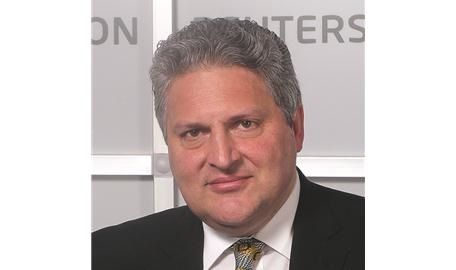THE NARRATIVE EMERGING in Europe around banks’ second-quarter earnings is that the restructuring cycle is reaching an end-point and giving way to a more wholesome focus on business growth. Sounds good, but is that realistic?
European bank CEOs have certainly had something of a spring in their step as they’ve unveiled results - perhaps with the exception of straight-talking John “this level of profitability falls short of our longer-term aspirations” Cryan at Deutsche Bank.
Barclays boss Jes Staley felt sufficiently moved to set a new 10% group return on equity target. The core business delivered slightly more than that: 10.4% (excluding PPI) in the first half and it was higher in key areas (12.4% in Barclays International, for example). But setting a new group target is a big call because it speaks to management’s belief in the sustainability of business flows.
I always wonder why CEOs always feel obliged to set themselves up for a potential fall by issuing targets they’re not in control of given the world has a habit of delivering curve-balls when you least expect them. And from my standpoint, I’d say it’s a bit early to call the new phase in the face of so many headwinds: political (Brexit, Trump, geopolitics), economic (spotty growth), monetary (end of QE?), regulatory; even simple market volatility. It’s a brave - or foolish - person who stands atop all of that and issues a clarion call to investors.
But at the end of the day, the CEO is also the chief marketing officer. And they can always fall back on the “it felt right at the time to say that but market conditions have changed” defence.
IT IS INTERESTING, though, that as chief executives talk excitedly about the future, the professional market is wracked by caution and a vague sense of foreboding around bubbles bursting, economies going into reverse and clients sitting on their hands. It strikes me that there’s a clear distinction between top-line CEO optimism amid still-uncertain times and the significant amount of unfinished business out there that CFOs are forced to deal with.
To be sure, there’s still an awful lot of regulatory baggage in-waiting whose impacts are yet to be fully baked in. MiFID II for a start. Even the critical issue of how bank capital is quantified and calibrated is still unclear in the absence of final Basel determinations around how to calculate risk-weighted assets, accounting and other items.
Those uncertainties were certainly expressed on Q2 earnings calls.
On the Barclays call, group treasurer Dan Hodge made references to four certainty-lite but material items related to key areas of banks’ capital levels. Reading between the lines of his technical exposition, his comments oozed uncertainty amid a series of elongated deadlines that will push implementation, including phase-in periods, of key pieces of regulation well into the 2020s. Isn’t that all a bit depressing?
PITY THE CFOS who have to spew forth on all of the operational techno-babble without sending everyone to sleep. I certainly get the sense that the CFOs are a tad frustrated by the slow burn of these items.
Indeed, what was fascinating about the Q2 earnings calls was how similar the CFO narratives are. Kirt Gardner, UBS’s group CFO, and his counterpart at Credit Suisse, David Mathers, both echoed the uncertainty theme just as Hodge did. Then again, they’re all fighting the same fight so I guess are reacting to similar agenda items.
On regulatory fatigue, the market naming conventions for each of the unfinished streams tell their own story and speak to the long drawn-out processes at play. So we may only be on the second iteration of MiFID - and that’s bad enough - but we’re already on the fourth go of Basel rules. And who would have guessed we’d get to Version Five of the capital requirements directive before policymakers had it all wrapped up?
Meanwhile, the so-called Fundamental Review of the Trading Book, which will have a dramatic impact on where banks house assets and how they calibrate them for capital purposes, is only on its first attempt. But you can bet your bottom dollar that will change.
IN THIS PAST quarter, UBS also had to explain away the slightly knotty issue of why its risk-weighted assets went up when everyone else’s were flat or went down. And why its capital ratio fell 60bp to within sight of its capital return floors. That in particular had spooked skittish investors who I suspect had little idea of the specifics of RWA calibration and its inverse relationship with capital. And cared even less. But in this market, you react first and think second.
On that specific issue, regulators need to stop endlessly tinkering. How can it be that UBS’s capital ratio fell sharply when absolutely nothing had changed? It is still the same bank with the same amount of capital. But because the regulator felt moved to change some multipliers, its risk-weighted assets have pushed up by SFr25bn over six quarters. If your investment strategy partly rests on quarter-on-quarter comparisons across a peer group, you might think UBS is turning into some sort of under-capitalised renegade.
And if the CEO’s best shot at reassuring you is that the capital return policy won’t change until Basel gets its act together - ie, it is likely to change - that’s not really what you want to hear.
Such pervasive uncertainty - albeit technical - as we hit the depths of summer and in the face of happy-clappy CEO forward optimism presents an oddly paradoxical spectacle. All roads lead to Basel. They should cancel all leave, lock themselves in a windowless room and stay put until we get some clarity. For everyone’s sake.
